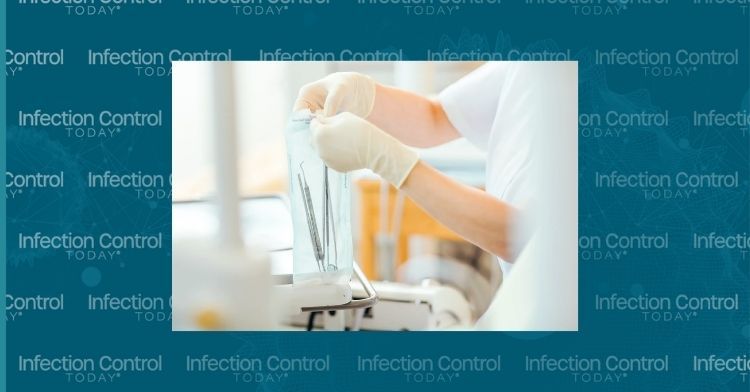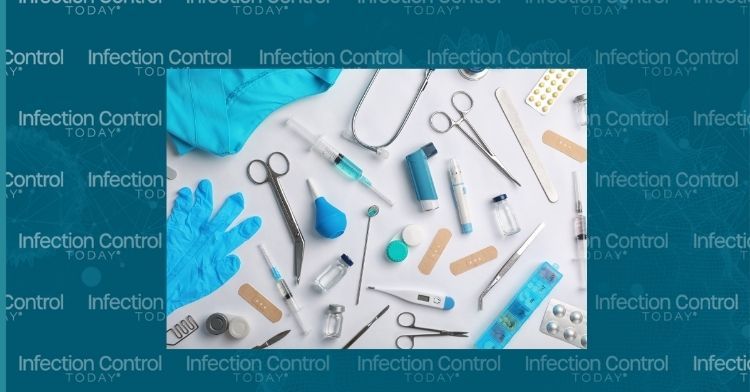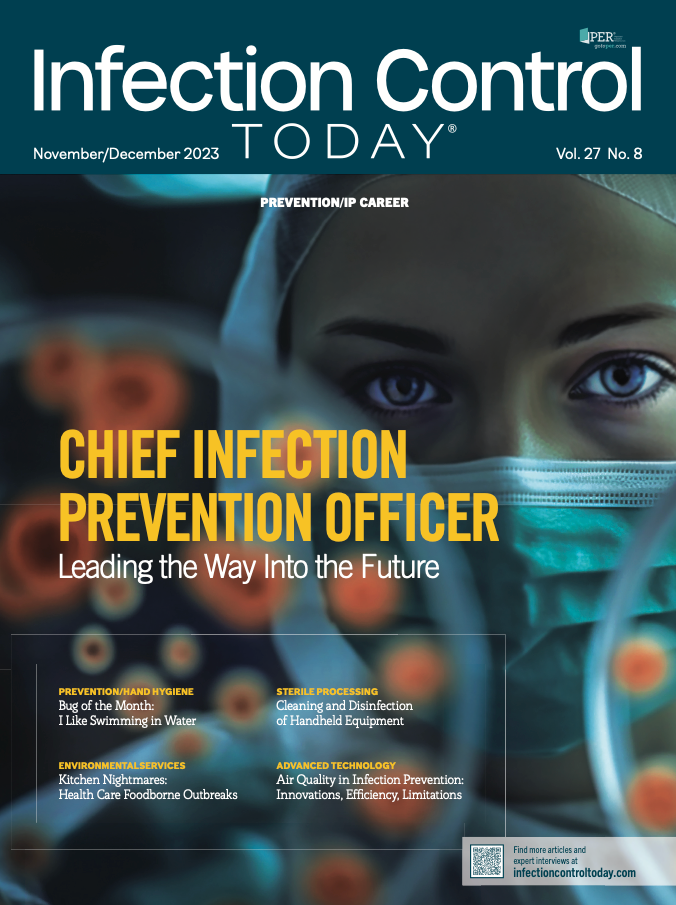Handheld equipment in hospitals encompasses a wide range of portable medical devices designed to facilitate patient care, diagnosis, treatment, and monitoring. These compact tools are essential components of modern health care, offering numerous advantages that contribute to improved patient outcomes, streamlined workflows, and enhanced medical services.
Some examples of handheld equipment include the following:
- Diagnostic devices
- Point-of-care testing devices
- Mobile imaging devices
- Patient monitoring devices
- Communication devices
Standard handheld equipment in health care facilities includes blood pressure cuffs, thermometers, blood glucose monitors, handheld ultrasound machines, pulse oximeters, and tablets.
Although handheld equipment provides significant benefits, its effective and safe use relies on proper training, regular maintenance, and infection control protocols. Health care facilities must ensure that health care professionals are well-trained in operating and maintaining these devices and that thorough cleaning and disinfection procedures are in place to prevent the transmission of infections between patients.
The instructions for use (IFU) for handheld equipment are crucial for ensuring safe, effective use in health care settings. These instructions, provided by the equipment manufacturer, offer comprehensive guidelines on properly operating, maintaining, and handling the devices. IFUs detail the recommended maintenance schedules and cleaning procedures for the equipment. Regular maintenance ensures that the devices function correctly and have a longer life span. Proper cleaning and disinfection protocols are critical for preventing cross-contamination and infections. Before using or purchasing any new equipment, always consult the IFU to assess the feasibility of cleaning and disinfection requirements, determine whether new cleaning agents are needed, and identify the educational needs of the staff.
Determining the appropriate level of cleaning and disinfection for each handheld item should also be based on the Spaulding classification.1 This is a widely used system to categorize medical devices and equipment based on risk of transmitting infections to patients. This classification system helps health care professionals identify the appropriate level of cleaning and disinfection required for each item.
The 3 categories in the Spaulding classification are as follows:
After putting on the appropriate personal protective equipment to protect yourself from potential exposure to pathogens and cleaning chemicals, remember these steps when cleaning and disinfecting handheld equipment:
- Ensure that the handheld item’s entire surface is thoroughly cleaned and covered with disinfectant, paying particular attention to high-touch areas and crevices. Avoid oversaturation, which may damage sensitive electronic components.
- Make sure to follow the recommended contact time for the disinfectant as specified by the manufacturer or disinfectant guidelines. This ensures sufficient time for the disinfectant to eliminate pathogens effectively.
- Some handheld items, like electronic devices, can be disinfected using UV-C light devices designed for this purpose.
- Allow the handheld item to air-dry completely or use disposable towels or lint-free cloths to pat it dry. Ensure that the item is fully dry before putting it back into use or storing it.
- Store disinfected handheld items in a clean and designated area, away from potential contamination sources. Assign specific labels or area designations to identify clean items; clean items should always be separated from used or dirty items.
- Establish a regular cleaning and disinfection schedule for handheld items based on their use and infection risk.
Critical Items: These touch sterile body tissues or the vascular system. These items are highly likely to transmit infections if improperly cleaned, disinfected, or sterilized. Examples of critical items include surgical instruments, needles, and catheters. These items must undergo sterilization before reuse to ensure they are free from all forms of microorganisms, including bacteria, viruses, and spores.
Semicritical Items: These come into contact with mucous membranes or nonintact skin. Although infection transmission risk is lower than with critical items, it is still significant. Examples of semicritical items include endoscopes and respiratory therapy equipment. These items should undergo high-level disinfection, which kills most pathogenic microorganisms but may not necessarily eliminate bacterial spores.
Noncritical Items: Noncritical items touch intact skin but not mucous membranes or sterile body tissues. The risk of infection transmission for noncritical items is relatively low. Examples of noncritical items include blood pressure cuffs and stethoscopes. These items typically require low-level disinfection, which is effective against most bacteria and some viruses but may not be effective against bacterial spores or resistant viruses.
Proper staff training is crucial to ensure that all personnel understand the classification system and follow the correct procedures for cleaning and disinfection. Regular monitoring and quality-control procedures should be in place to verify the effectiveness of the cleaning and disinfection processes. By applying the Spaulding classification, health care
facilities can establish standardized practices for cleaning and disinfecting medical equipment, contributing to patients’ safety and well-being.
Health care facilities must prioritize using disinfectants approved by the US Environmental Protection Agency (EPA) to maintain a safe and hygienic environment for patients, staff, and visitors. EPA-approved disinfectants2 have undergone rigorous testing to demonstrate their safety and effectiveness in eliminating or reducing harmful microorganisms. Using these products ensures that health care facilities employ chemicals verified as safe and efficient for their intended purposes. EPA-approved disinfectants are specifically formulated to target pathogens commonly encountered in health care settings. They are designed to be effective against a wide range of bacteria, viruses, and fungi, including those that may cause health care–associated infections (HAIs). HAIs pose significant risks to patients, particularly those with compromised immune systems. By using EPA-approved disinfectants, health care facilities can minimize the risk of HAIs, protecting vulnerable individuals from preventable infections.
EPA-approved disinfectants come with clear instructions for proper use and handling. This ensures that health care personnel are well informed about the correct application and safety precautions, reducing the likelihood of accidents or misuse. The EPA carefully assesses the ingredients and concentrations in approved disinfectants to ensure they are safe for use in health care environments. Using nonapproved or unregulated disinfectants may expose patients and staff to potentially harmful or toxic substances. Relying exclusively on EPA-approved disinfectants is crucial to effective infection prevention and control in health care facilities.
When selecting appropriate disinfectants for use in health care settings, it is essential to consider the EPA approval and efficacy against target pathogens and factors specific to the patient’s condition, such as their isolation status and diagnosis. Different pathogens pose varying degrees of risk, and the disinfectant’s spectrum of activity should align with the known or suspected pathogens associated with the patient’s diagnosis. Targeting the appropriate pathogens is crucial to preventing the spread of infections within the health care setting. For example, chlorine-releasing agents demonstrate greater efficacy in eliminating Clostridioides difficile spores than other agents.3
Health care facilities must also consider patients’ allergies and sensitivities.4 Patients may have known allergies or sensitivities to certain chemicals used in disinfectants. Selecting products that are safe for use around sensitive individuals is essential in preventing adverse reactions. Collaboration between infection preventionists (IPs) and environmental services (EVS) is crucial when a patient has an allergy, as an alternative and approved solution may be required. IPs and EVS may need to work promptly to identify an alternative solution.
Using the proper personal protective equipment (PPE) when handling disinfectants is essential for the safety and well-being of health care workers. Disinfectants are potent chemicals that can pose health risks if improperly handled. Wearing the appropriate PPE—such as gloves, goggles, and masks—acts as a barrier and protects health care workers from potential chemical exposure, splashes, and accidental spills. Numerous studies across various work settings have documented a rise in asthma and asthma-related respiratory symptoms among workers exposed to cleaning or disinfecting agents. Hospital workers
frequently engage in cleaning and disinfection tasks and are particularly susceptible to respiratory and skin issues resulting from these agents. This underscores the importance of using appropriate personal protective equipment when handling these chemicals.5
Cleaning and disinfecting items are pivotal in maintaining a safe and hygienic environment, particularly in health care facilities. By implementing appropriate cleaning practices, we can effectively remove visible dirt and contaminants from surfaces. Additionally, proper disinfection techniques ensure the elimination of harmful microorganisms, including bacteria, viruses, and spores, reducing the risk of infections and cross-contamination. Consistent adherence to manufacturer instructions, infection control guidelines, and evidence-based practices is essential when selecting cleaning agents and disinfectants. Moreover, health care workers should receive proper training on the correct procedures and the safe handling of chemicals to safeguard their well-being and that of patients. The synergy between cleaning and disinfection is vital for creating a healthier, safer environment in health care facilities. Through these practices, we contribute to the prevention of infections, the protection of vulnerable populations, and the promotion of overall well-being.
References
1. A rational approach to disinfection and sterilization. CDC. Updated September 18, 2016. Accessed July 30, 2023. https://www.cdc.gov/infectioncontrol/guidelines/disinfection/rational-approach.html
2. Selected EPA-registered disinfectants. US Environmental Protection Agency. Updated September 13, 2021. Accessed July 30, 2023. https://www.epa.gov/pesticide-registration/selected-epa-registered- disinfectants
3. Macleod-Glover N, Sadowski C. Efficacy of cleaning products for C difficile: environmental strategies to reduce the spread of Clostridium difficile–associated diarrhea in geriatric rehabilitation. Can Fam Physician. 2010;56(5):417-423.
4. Casey ML, Hawley B, Edwards N, Cox-Ganser JM, Cummings KJ. Health problems and disinfectant product exposure among staff at a large multispecialty hospital. Am J Infect Control. 2017;45(10):1133-1138. doi:10.1016/j.ajic.2017.04.003
5. Dang KTL, Garrido AN, Prasad S, et al. The relationship between cleaning product exposure and respiratory and skin symptoms among healthcare workers in a hospital setting: a systematic review and meta-analysis. Health Sci Rep. 2022;5(3):e623. doi:10.1002/hsr2.623


